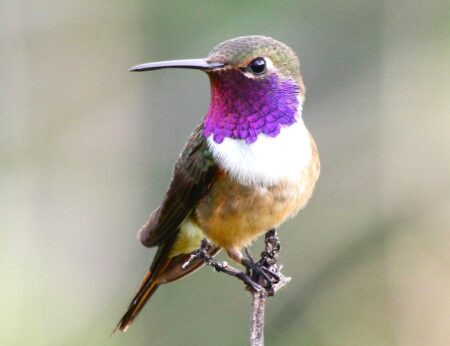
In 2023, Martha Cartwright of Grand Bahama Island Birding (GBIB, a local birding club) accepted the challenge of restarting Grand Bahama’s famous “Introduction to Birding” classes—the brainchild of the legendary Erika Gates. Erika’s Beginner Birding course had been a fixture of Bahamian birding for decades and had ushered many a new birder into the flock. In this blog, Martha shares just how much brain-racking work involved in planning and running a successful birding course—and gives some tips on how others can take up the mantle and grow the community through their own courses!
Birding is awesome! The vibrant colors, entertaining behaviors, and unique songs and calls of birds provide us with the incentive to get outside and reconnect with nature. However, birding isn’t always an easy hobby! It can be challenging and unpredictable. Beginners often struggle with spotting and identifying birds, especially in poor lighting or when obstructed by leaves and branches. Additionally, learning to use equipment like binoculars can be frustrating. These challenges can make the hobby seem daunting at first, but with patience and practice, the rewards are well worth the effort.
Minutes of Grand Bahama Island Birding (GBIB) Annual Meeting, 31 March 2023:
Birding classes can provide the resources and community to help new birders get started. These courses can be highly rewarding to both instructors and participants. They are also a crucial part of GBIB’s remit and it was decided at the club’s annual meeting in 2023 that they should be revived. Members shared that “They (the classes) are important for recruitment (over half of them joined as a result), as a community service, and as a legacy to Erika.”
I agree to take the lead on this with the aim of running a course in November 2023. I cracked my egg-head skull for seven months because of that one small hold-your-hand-up moment volunteering for this job. In retrospect, despite said cracks-in-head, I’m glad I did. The actual teaching part was great fun—I love teaching. But as any teacher will tell you, hours and hours of planning and preparation are needed before that “fun” begins.
I thought this would be easy. Our beloved mentor, Erika Gates who passed away in December 2021 had taught the class for years. I figured I’d find her notes and teach from them. Unfortunately, Erika’s notes were nowhere to be found. The irony was not lost on me that I was practically the only local resident who, because of teaching yoga on Saturday, had not been able to attend Erika’s classes. However, Erika had generously taught me about birds and birding at her elbow, I had old student binders to review, and I had thousands of bird and habitat photos on file. I could do this.
My hope is that by sharing our process for creating this class, your skull will have fewer cracks when you design your own program. Out of 10 students, nine gave us a 10/10 review. One student gave us a 9/10 review with a comment, “Maybe more classes so that it is not too jam-packed.” Tough criticism, that.
Did you notice? I’ve switched from writing as an “I” to a “we.” I may have put my name on the job, and I have put my name on this blog, but this has been a group effort! Delores Kellman, GBIB President, was with me every step of the way both in preparing for the class and as co-instructor. She too is an educator, and an organized and reliable one at that. She delivered on every commitment she made. She is the best—thank you, Delores.
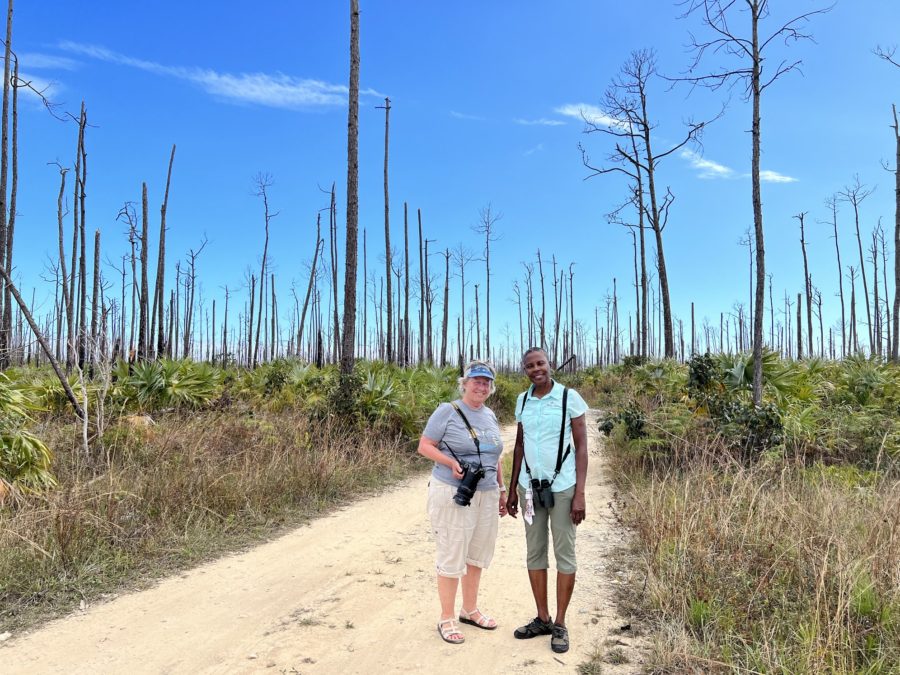
Many other GBIB members generously helped with ideas and suggestions when asked—and I asked often. Thanks to Bridget Davis and Charmain Hall for leading the group out in the field. Thanks to Deana Williamson for donating classroom materials. Thanks to GBIB members who came to audit the class and assist if needed. Special thanks to another educator, Mark Milkovich, who critiqued the syllabus time and time again, and was instrumental in getting us to clearly define our objectives and then pack them into four half-day classes—classes which included time outside birding! Jam-packed indeed.
It takes a village to raise a child—and it takes a flock to organize a birding class. It takes good sponsors too. Ed Gates’ Grand Bahama Nature Tours made a generous donation that we used to buy Vortex binoculars from BirdsCaribbean (BC) at a discounted price. We sold those as needed and our expenses were covered. Our second sponsor was, you guessed it, the fabulously supportive and generous BirdsCaribbean. BC shared their professional PowerPoint presentations. Their awesome Bird Sleuth program, available for download in English and Spanish here, also has many great ideas that can be tailored for adults. They provided Raffaele’s “Birds of the West Indies” field guides, which we sold to cover costs. They shipped down posters and gifts of buffs, hats, and tote bags. Little gifts always make for fun classes. Lisa encouraged and reviewed and suggested and encouraged some more. Thank you, Lisa; thank you, BirdsCaribbean! Our final sponsor was Garden of the Groves who donated the beautiful venue for the classes and gave entrance to students free of charge. Thanks to Ed Gates and Marilyn Laing for their support.
For four Saturdays in November, from 8:30am -12.00pm, we charged $20.00 for the course, accepting students from a minimum age of 16 years and older. Students were required to have the Raffaele field guide and a pair of binoculars. We had both available for purchase. We also provided loaner binoculars. Membership in GBIB was encouraged but not required. We distributed homework every week and reviewed it in class, but—no grades ever!
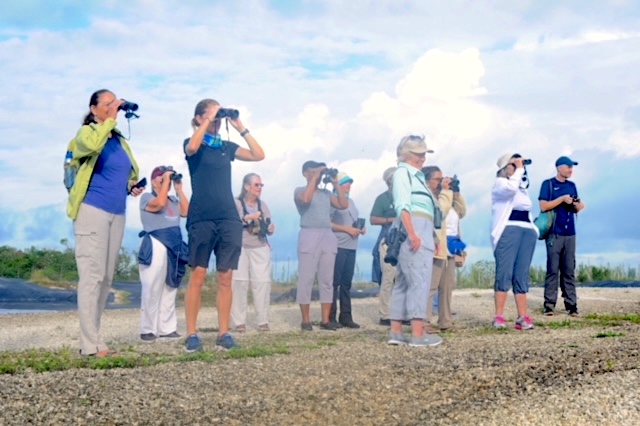
The survey consensus was “more time out birding.” Our outings were rained out twice, I talked too much once (what, only once?). After that first class Delores and I put time constraints for teaching each concept. To have more time for birding would mean more classes, longer classes, or teaching fewer birding skills. Well? I suppose we could leave off the eBird section of the course, but there is so much information on eBird for continued learning—bar charts, range maps, hot spots, Birds of the World—there’s a lifetime of learning! Besides, I believe strongly in citizen science. Submit an eBird checklist—what a simple way to give back to the birds for the pleasure we receive when observing their intriguing lives! No, eBird stayed in the course.
Below are our “10 Objectives” and our “To-Do List” from start to finish. I hope it helps and encourages you to develop your island’s Basic Birding Class. If you want a copy of the final version of our syllabus, please send me an email at marthainfreeport@icloud.com and I’ll be happy to share with you. This has been a totally rewarding experience, and we plan to make it an annual event. As you can see from the comments below, Erika was very much a part of our class, and we know she’d be proud to see her tradition carried on.
Here are some edited notes from Tristan Gibson’s article on the class. Photographs are by him as well. Our thanks to Tristan for covering the event in the local news.
For novice birder, Gemma Hudson, this class was a way to reconnect with Erika.
“I was working for her [at Kayak Nature Tours] from 2010. Even outside of work, she made an impact on me,” she said. Gemma jokingly added, “When I trained to be a tour guide, Erika would come along. She’d often ask, ‘Okay, what [bird] is that?’ Just to keep you on your toes.”
“I remember going out to Lucayan National Park for a kayaking tour where there were many shorebirds. One time she asked me if I knew what they were. I said, ‘baby birds,’ and she was like, ‘No, Gemma. We need to get it together,” she chuckled. Despite her position, Gemma admitted that this was her first formal birding class. “It was actually fun to finally understand the theory behind birding. And I guess it’s been rubbing off of me because I now have a son, and he wants to go birding too. He gets upset when I go without him.”
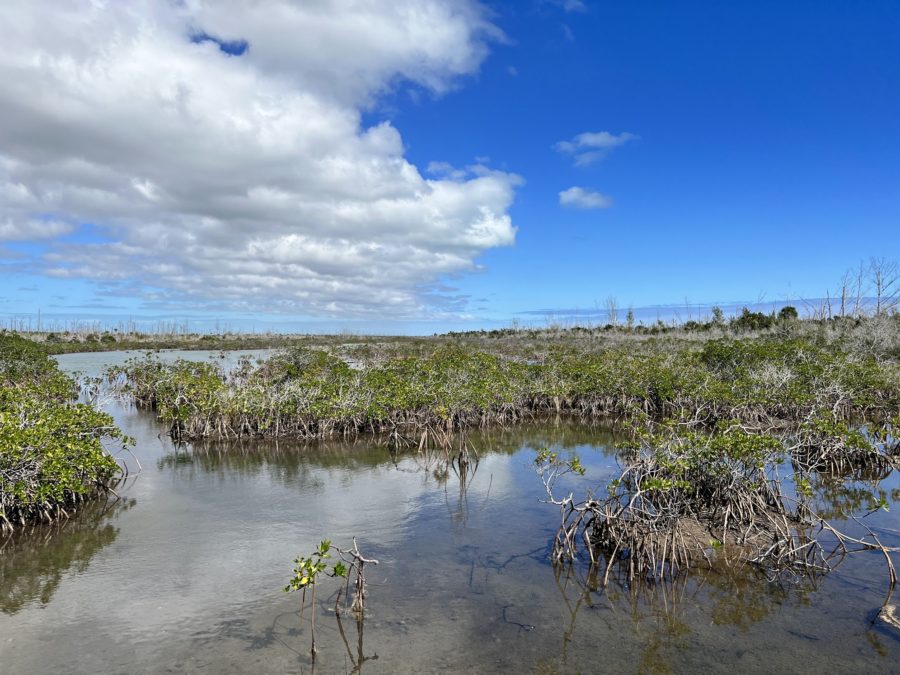
As a long-time friend to Erika, Eugena Granger was happy to see the class being offered once more. “I’ve known Erika for many, many years—probably 40 or more at this point. She was the type of person who mastered what she took on. She did her best and just wanted you to reach your best.”
She continued, “This class is a tremendous tribute to her legacy. She was not only a birder; she was an environmentalist at heart. She used to walk on the beach, pick up distressed bees she noticed near the water, and take them to a dry spot. She was always one to promote protecting the environment and witnessing all it had to offer.”
Gemma and Eugena both noted that birding has become a competitive, yet relaxing activity that bolsters a supportive community they’ve grown to love. “The excitement of getting up in the morning to see what else you’ll find, comparing what you’ve found with others, it’s exhilarating,” Eugena enthused.
Delores Kellman noted that as interest in birding grows on the island, more classes will be offered in the future. “We are very blessed here in Grand Bahama. There are many birds to discover, including five Bahamian endemics that can be found on the island. Considering the 10,000 species of birds worldwide, how can you get bored of birding!” she exclaimed. “Erika was always concerned with making yourself better, becoming more knowledgeable, especially in this field. Birding was her gift we wanted to pass on.”
Goals and Objectives
By completing the course, student should be able to:
- Properly use and care for binoculars and birding scopes.
- Know birding etiquette (in group & alone.)
- Know how to observe and describe a bird in the field: Size & shape, Color Pattern / Topography, Behavior, and Habitat. “Notice 3 things about a bird.”
- Understand the organization of a field guide and the information contained in the Guide.
- Know how to find a bird in the Guide. Have highlighted in the Guide the birds likely to be seen on Grand Bahama.
- Know how to find when you’ll see a bird on the island (using field guide status and eBird bar charts.)
- Know basic habitat classifications on GBI. Understand the importance of habitat to the bird, and how habitat affects behavior.
- Know how to submit a bird record on eBird and eBird Mobile app. Understand the importance of eBird data for scientists and for maintaining your personal birding data / journal. Know how to navigate eBird for information.
- Build a list of additional resources to continue learning after the course is completed.
- Identify ways you can contribute to bird conservation in your yard, locally, nationally, and globally.
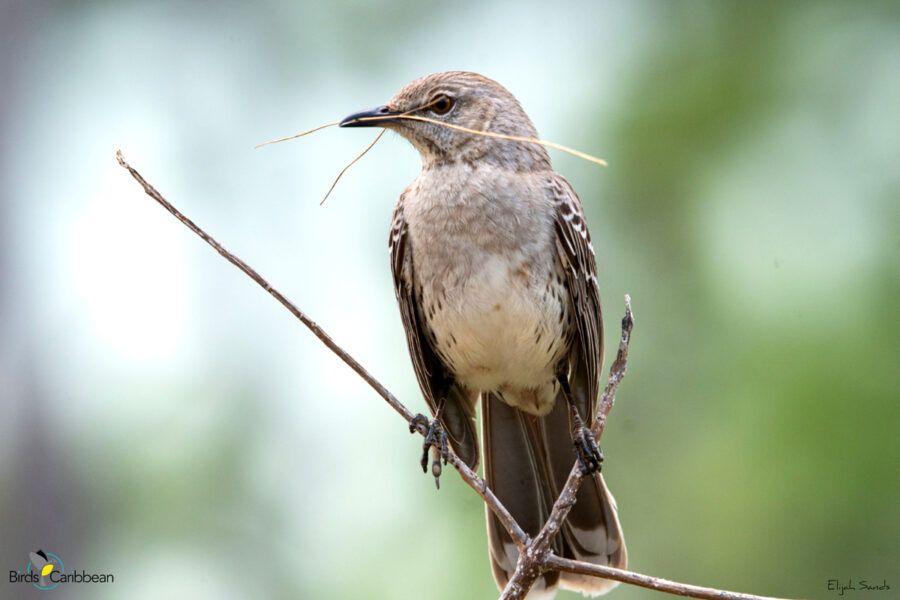
“To do” list for our home-grown class:
- Determine course objectives and goals for class. Create a four-week syllabus.
- Find sponsors to assist with costs, materials, and hand-outs.
- Determine course requirements, dates & time, class size, age limits, location.
- Update the Grand Bahama Island bird checklist for distribution.
- Organize sign-up procedures. Create an e-mail group (or chat group) for class notices and updates. Have students create an eBird account before starting the class.
- Advertise to the community.
- Create PowerPoint and Keynote presentations for use during class.
- Prepare materials for distribution and homework assignments.
- Determine locations for weekly field trips and ask GBIB members to lead the outings.
- Create a survey for end of class feedback and suggestions.
- Have printed Certificates of Completion for distribution to “graduates.”
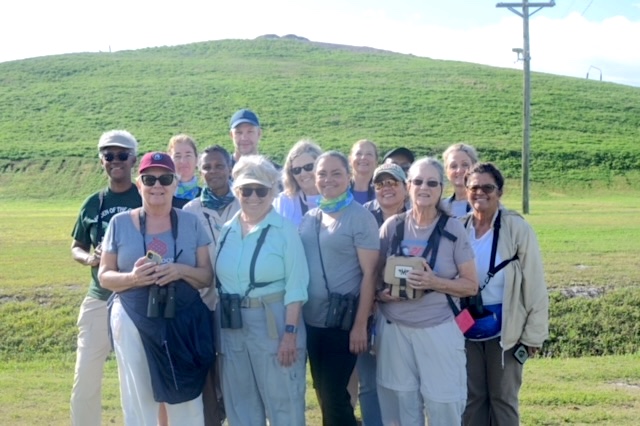
This course came full circle for me. I started off as a student of Erika’s, barely able to identify birds on my own. And now, working with a network of dedicated bird conservationists, I have helped new birders to identify birds by sight and birdsong. They understand the importance of habitat not only as a place to live, but as a place birds need to survive and raise their young. Birding is a lifelong hobby that can provide you with many benefits if properly nurtured. So, if you’ve been telling yourself that you want to start birding—don’t wait. Start now.
Considering starting a beginners birding course on your island? (We hope you are!) We have loads of FREE educational resources that can help. Explore the links below, and feel free to reach out to us at info@birdscaribbean.org.














